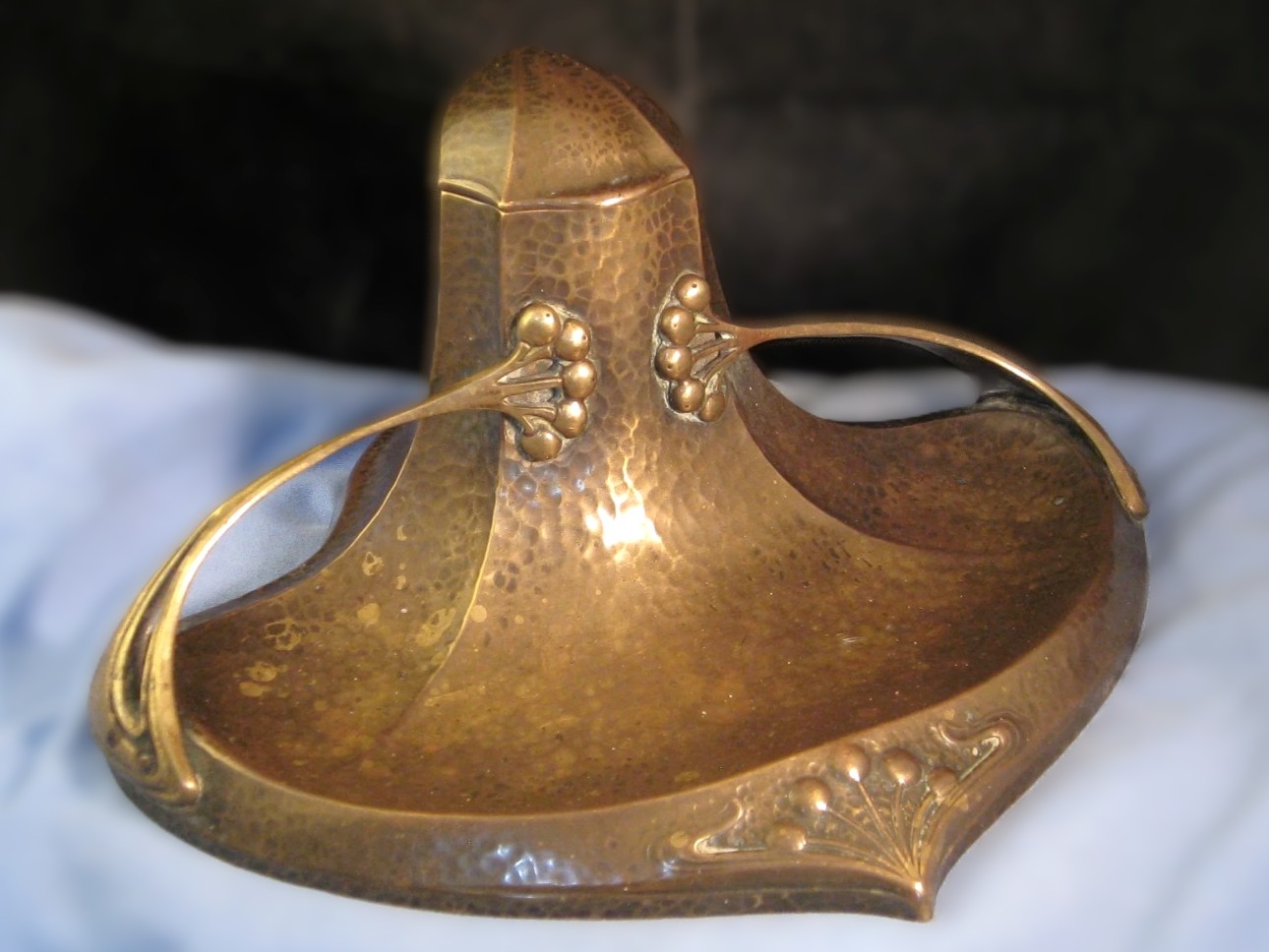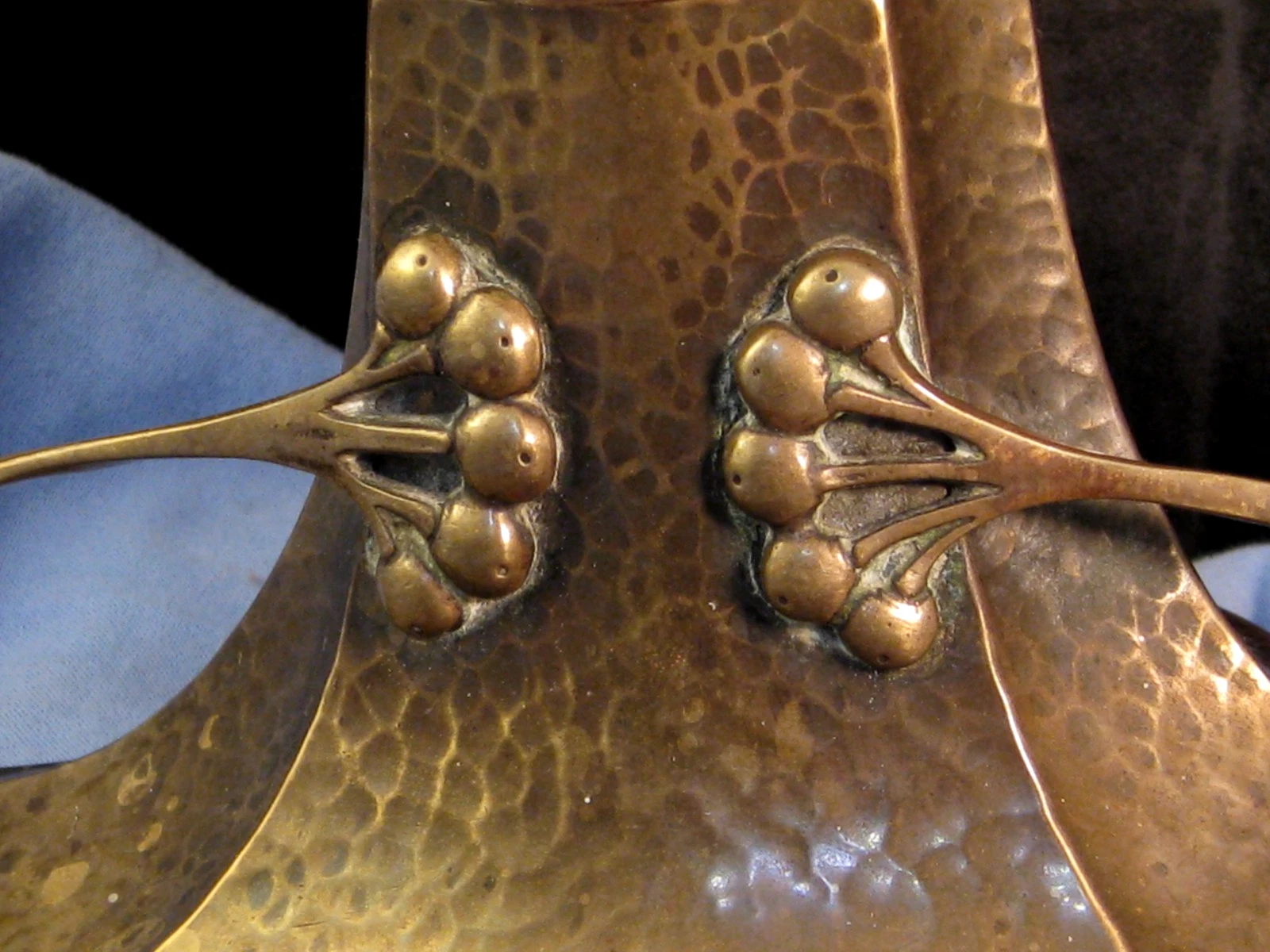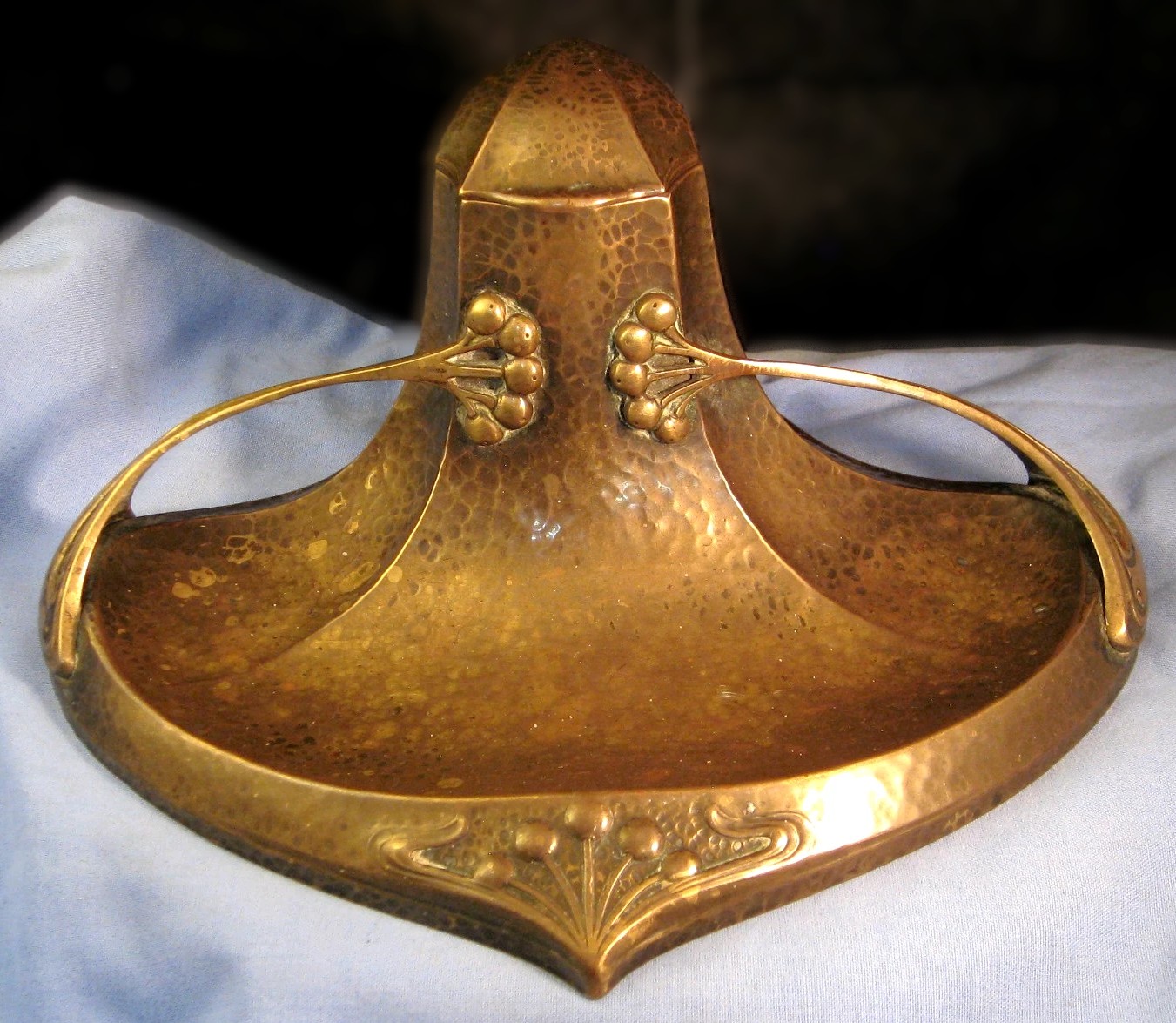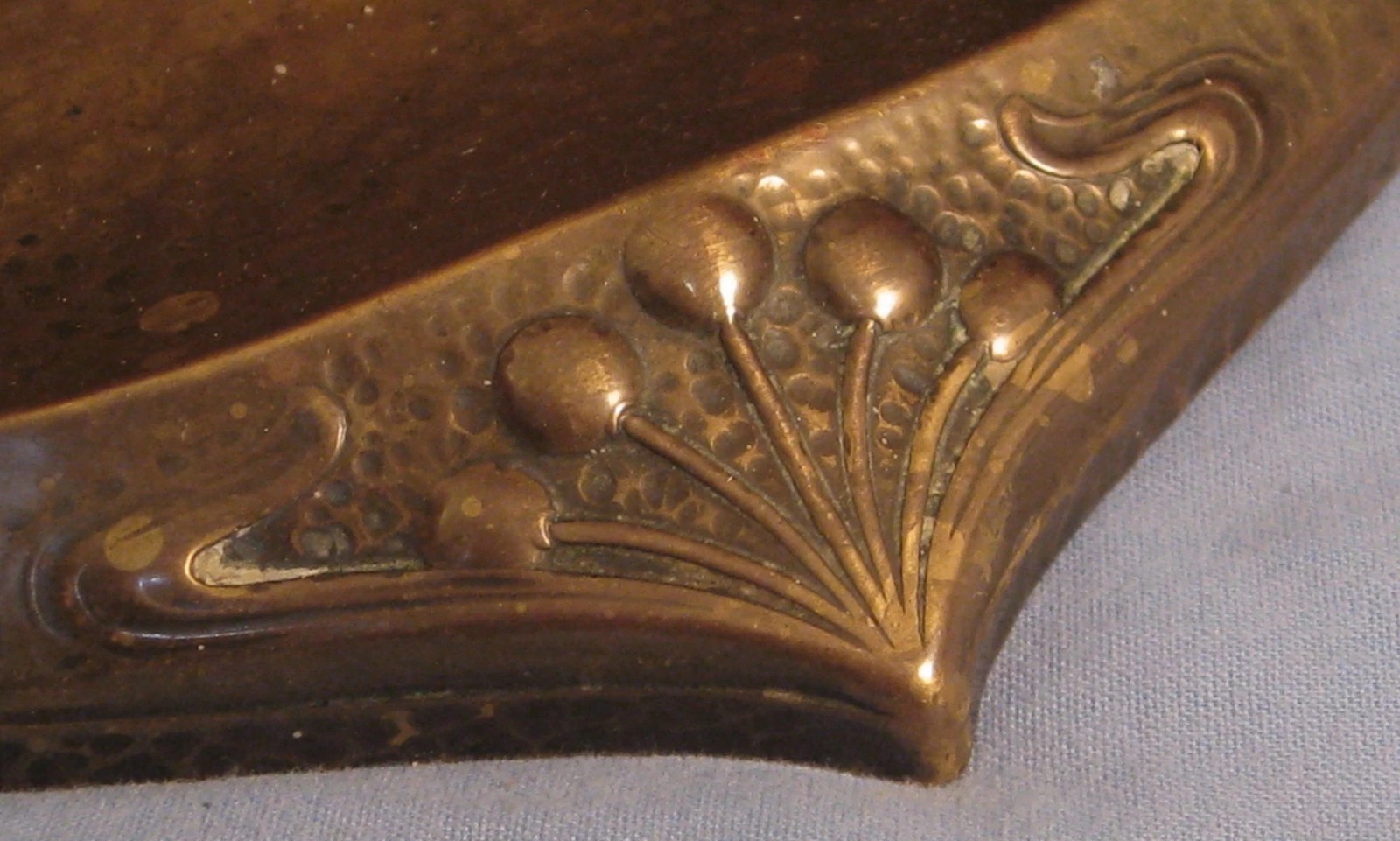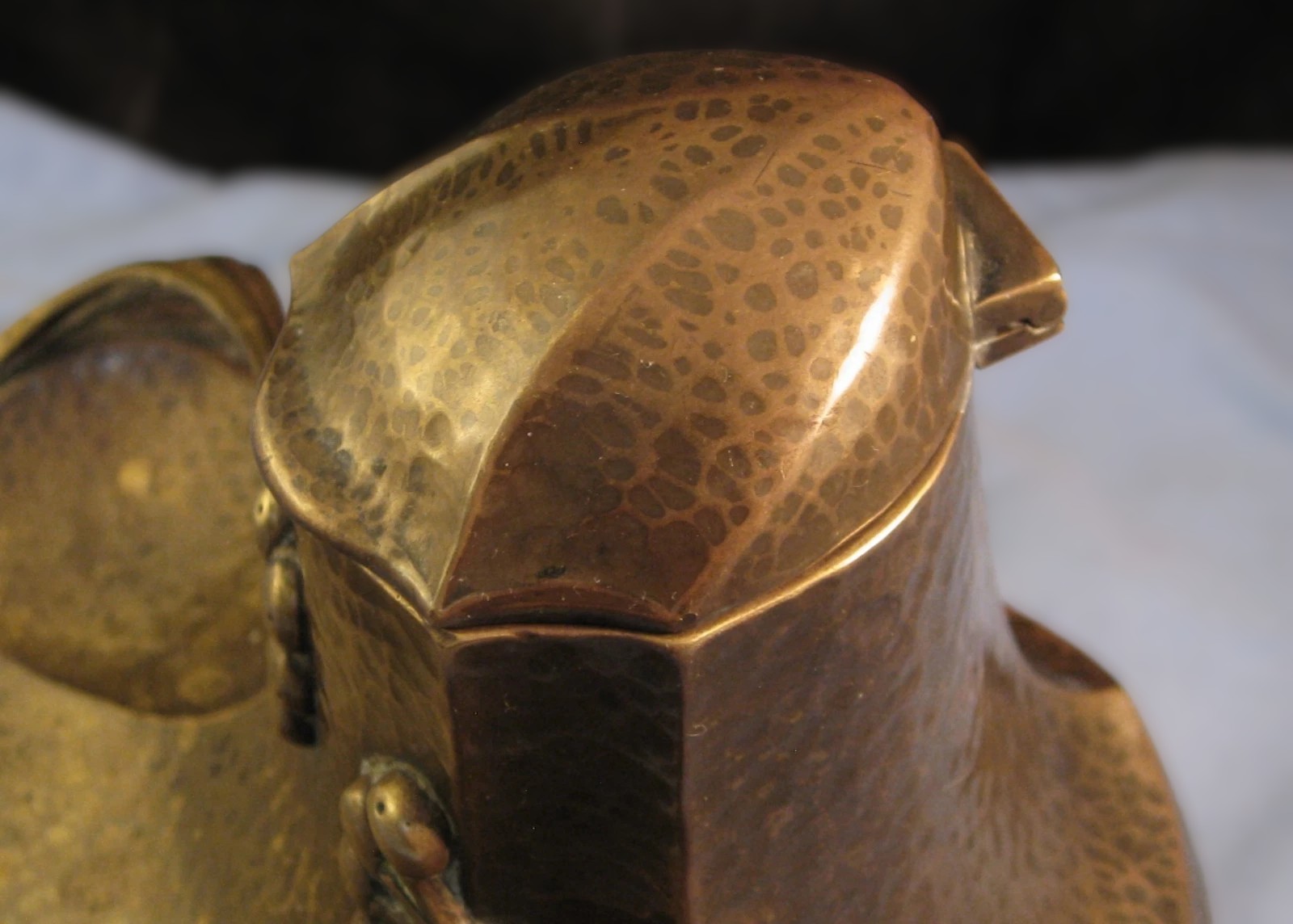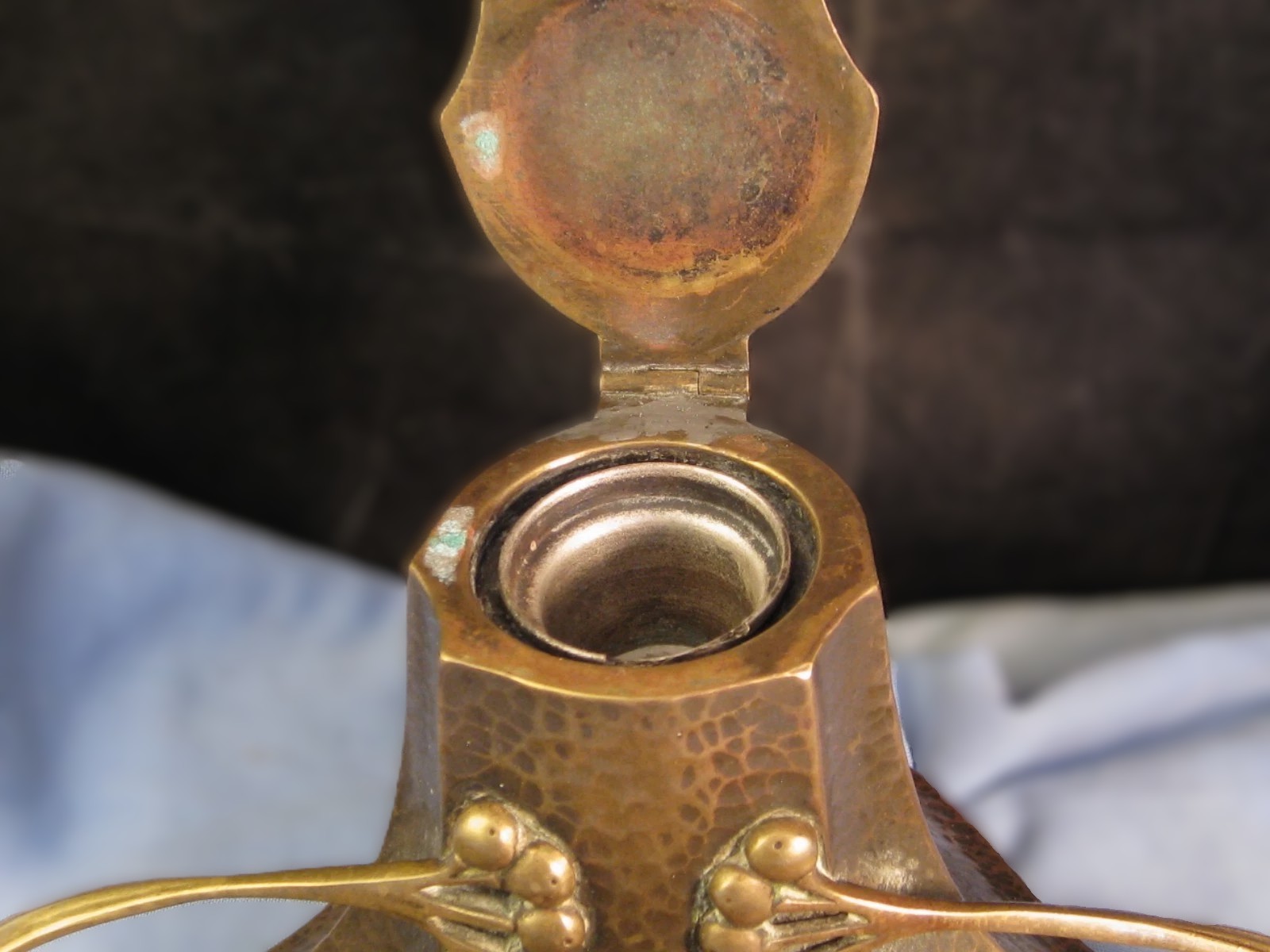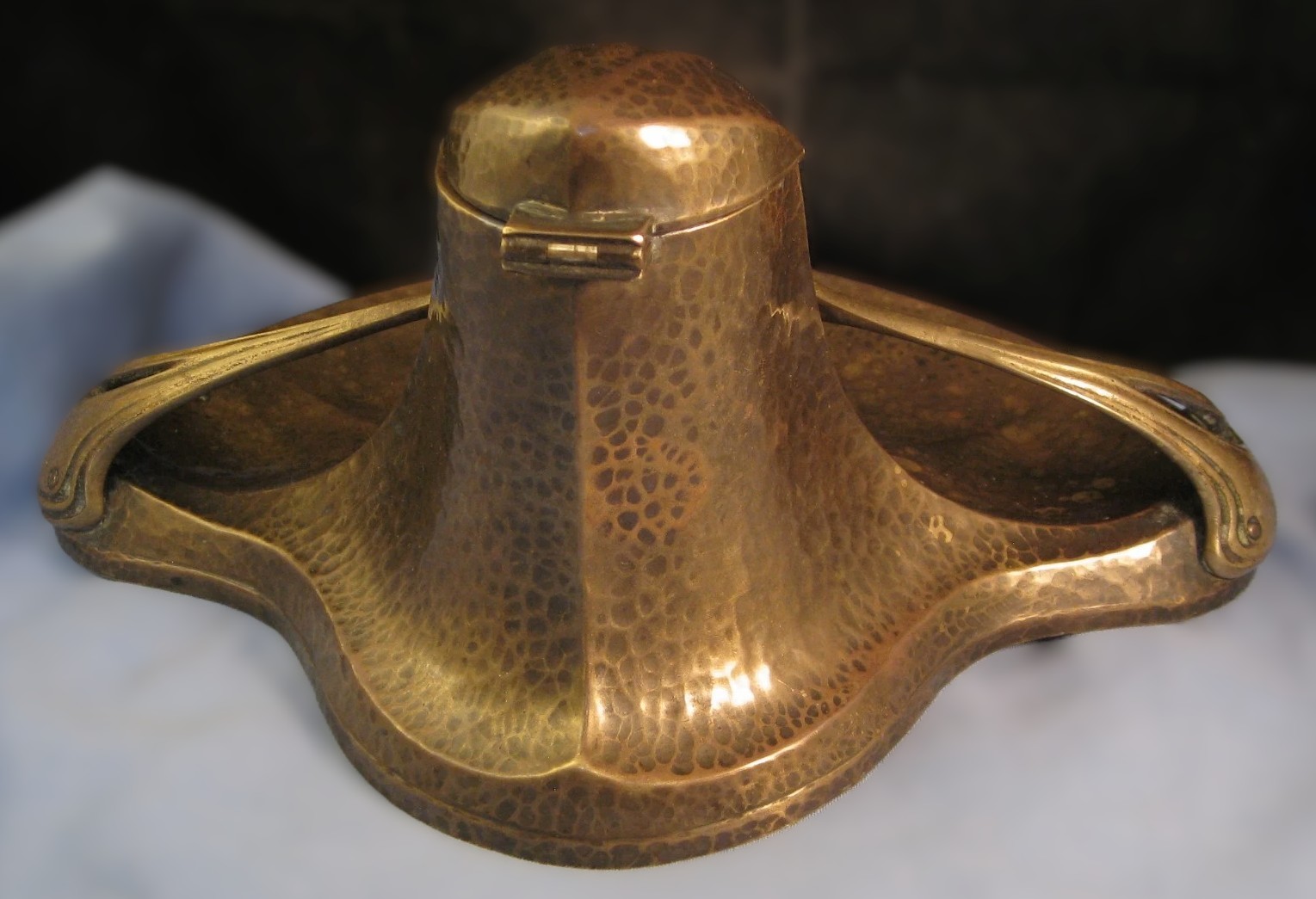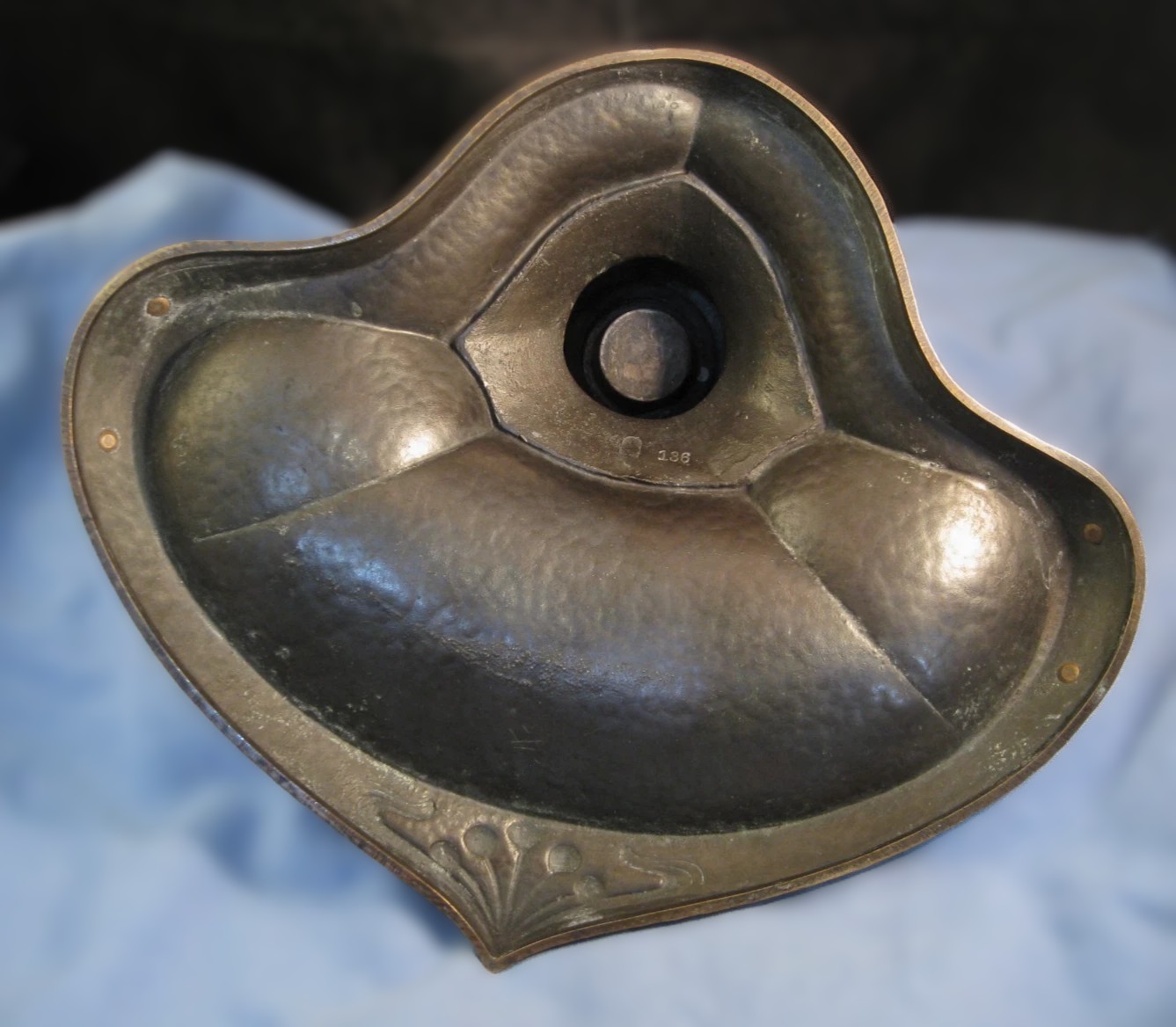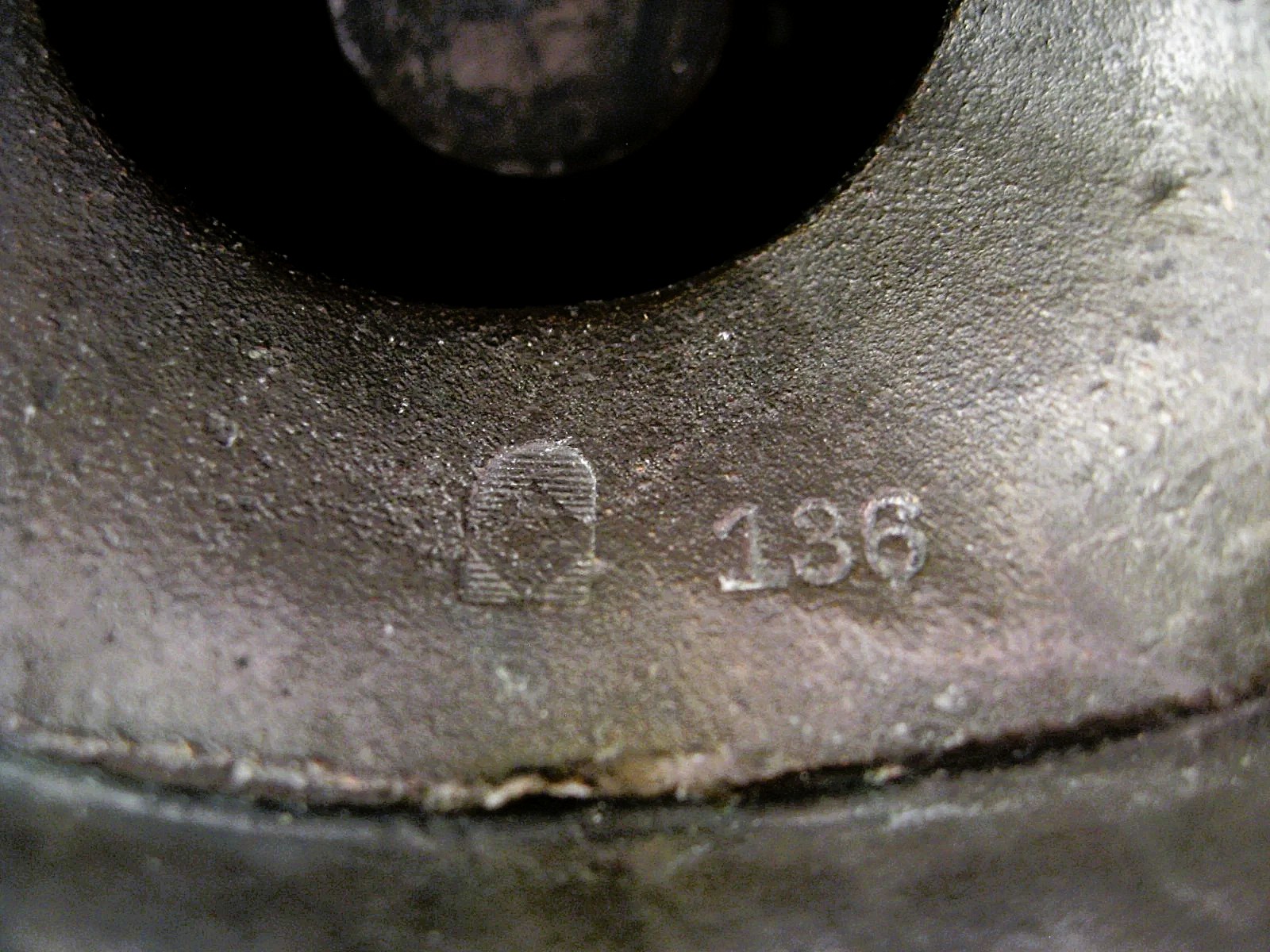
WMF Inkstand (Model No. 136)
| Categories | Art Nouveau |
| Type | Jugendstil |
| Material | Coppered metal |
| Markings | See Narrative |
| Manufacturer | WMF |
| Origin | Germany |
| Date or Era | circa 1900 |
| Measuring | 8 ¾” x 7 ½” x 4 ¼” high |
This metal inkstand displays a transitional decorative style and a distinctive surface finish.
- Material and Finish: The inkstand is made of metal, likely silver-plated copper, given WMF’s typical production methods. The surface has a noticeable, fine texture achieved through a process called planishing. This finish is created by systematically hitting the metal with a hammer to leave small, overlapping facets, giving the metal a hand-worked appearance.
- Form and Decoration: The inkstand is slightly rounded in shape and relatively low-profile.
- Inkwell Holder: The central feature is a circular well designed to hold the inkwell. This well is surrounded by the key decorative elements.
- Berry Pattern: The decorative motif consists of a repeating pattern of stylized berries (or small, clustered fruit). This pattern is applied in relief around the body of the inkstand.
- Pen Area: The front edge of the base is shallow and wide, serving as a functional area for placing pens and other small desk items.
- Markings: The underside is marked with the image of a running ostrich (the common trademark for WMF), accompanied by the number 136. The number is the model or catalogue number for this specific inkstand design.
Information on WMF (Württembergische Metallwarenfabrik)
WMF (Württembergische Metallwarenfabrik) is one of the most important and influential German metalware manufacturers of the late 19th and early 20th centuries.
- Identity and Location: WMF was established in 1880 in Geislingen an der Steige, Germany, through the merger of two existing firms.
- Production Focus: They became famous for high-quality, mass-produced metal goods, especially for the home, including tableware, tea sets, smoking accessories, and, notably, desk accessories like this inkstand. They were leaders in silver-plating technology.
- The Ostrich Mark: The running ostrich mark is WMF’s most famous and long-used trademark. It is a pun on the town of Geislingen (which means “little geese” or “geese meadow”) and the historical coat of arms of the town. This mark, sometimes incorporating letters (like “G” for Geislingen), helps date WMF pieces, with the specific iteration of the running ostrich (often in a rectangle or semicircle) being consistent with the period around 1900–1918.
Analysis of Style: Art Nouveau vs. Arts & Crafts
The style of this WMF inkstand is best described as an intersection between Arts & Crafts and Art Nouveau (specifically, the German form known as Jugendstil).
| Feature | Style Indication | Explanation |
| Planished/Hammered Finish | Arts & Crafts | This hand-worked, textured surface deliberately moves away from the smooth, highly polished look of pure Victorian machine production. It emphasizes the honesty of material and the touch of the craftsman—a core tenet of the Arts & Crafts movement. |
| Stylized Berry Pattern | Art Nouveau (Jugendstil) | The use of organic, naturalistic forms (berries, leaves, vines) simplified into a repeatable, flowing pattern is a hallmark of Art Nouveau/Jugendstil design. The motif is decorative and often slightly asymmetrical or curvilinear. |
| Mass Production | Jugendstil | While incorporating hand-finished looks (planishing), WMF was a mass manufacturer. German Jugendstil was often applied to industrial production, merging artistic design with affordability, unlike the stricter, often expensive, hand-made ideals of the original English Arts & Crafts movement. |
Conclusion on Style:
The inkstand is an excellent example of commercial German Jugendstil which adopted the textural quality of the Arts & Crafts movement (the hammered finish) and combined it with the curvilinear, botanical motifs of Art Nouveau (the berry pattern). It represents the transitional and eclectic decorative trends of the turn of the 20th century (c. 1900–1910).
Sold for $125 in September 2025
Content disclaimer. The information posted is the owner’s best knowledge and may not have been vetted by the SOIC. We welcome comments, corrections, and additions, working to make our website information comprehensive and accurate.
Join the Society of Inkwell Collectors (SOIC) – it’s free!
Founded in 1981 as a non-profit organization,
we are documenting inkwells (and accessories).
We’re here to help and inform!
